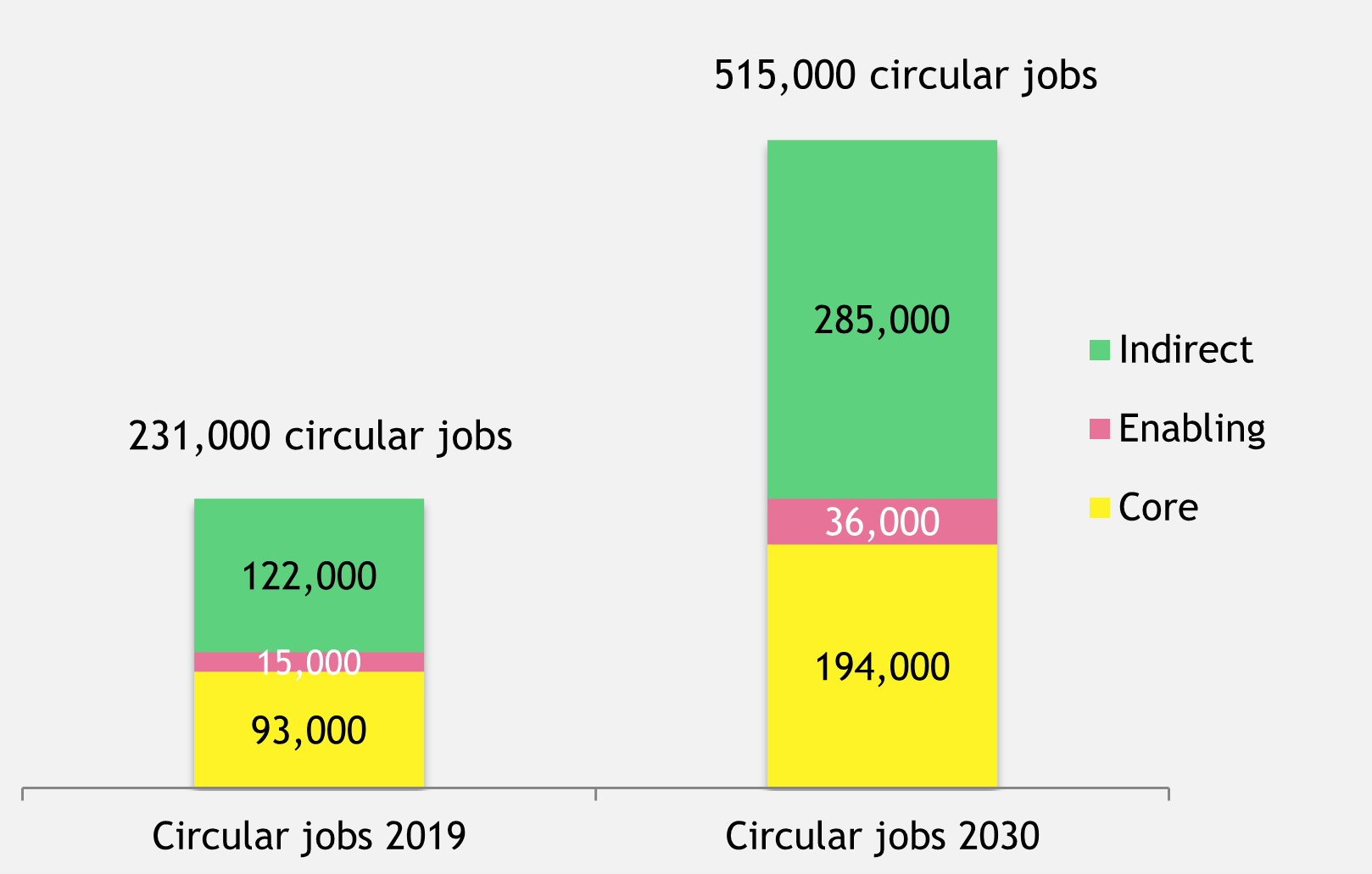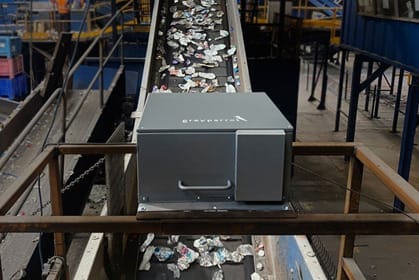In 2022, ReLondon published The circular economy at work report which demonstrates the circular economy’s potential to contribute £24.2bn to London’s economy and incorporate 515,000 circular jobs at all skill levels right across the supply chain by 2030.
Circular jobs are defined as those covering activities that either directly or indirectly support the objectives of a circular economy, and can be divided into three categories:
- Core circular jobs ensure that materials cycles are closed, with materials being cycled for as long as possible at their highest possible value. This includes jobs within reuse and repair businesses, renting and leasing of products, and the recycling of materials and resources.
- Enabling circular jobs are those in the supply chain of core circular economy businesses that help core circular economy businesses accelerate growth and scale-up, such as logistics or communications.
- Indirectly circular jobs are those that support the activities or functioning of core circular businesses, such as government and professional services.

As of 2019, most (53%) circular jobs were found in indirectly circular sectors, followed by jobs within core circular sectors (40%) and the remaining (7%) are within enabling circular sectors.
By 2030, enabling circular sectors are projected to experience significant growth, with a 140% increase. Likewise, indirectly circular sectors are expected to increase by 133%, and core circular sectors by 108%. The circular economy is, therefore, on track to deliver significant and wide-ranging job opportunities across London within the next decade.
To better understand circular jobs and businesses in practice, let’s look at technology company Greyparrot to see where they fit into the circular economy, along with the types of circular jobs and skills within their operations and those needed to support future growth.
SME spotlight: Greyparrot

Greyparrot is a fantastic example of an enabling circular business within the digital technology sector, as it helps core circular waste and recycling businesses operate more efficiently, accelerate growth and scale-up.
Working directly with facilities that process thousands of tonnes of waste a day, Greyparrot‘s waste recognition software sits on top of conveyor belts, allowing waste to be monitored and sorted at scale.
This software uses computer vision and artificial intelligence to examine waste stream contents and shares data specific to each product and material via a live dashboard. This real-time analysis helps waste managers save costs, increase revenue and mitigate against risks.

The company decided to focus their software’s application on the waste management sector after discovering a gap between the value of waste data and the level of access organisations have to it. This helped inform Greyparrot’s mission: to work towards a world where waste is seen as a resource and is valued.
Mikela Druckman, Greyparrot CEOThe circular economy can only exist in a world where every material is valued as a resource, including waste. This means considering the full life cycle of a product from the moment it’s designed. Ultimately, it is a shift in the way we think about consumption and a revamp in the business models of the future.
Today, Greyparrot is powered by a team of 40 people, half of whom work in technical engineering roles (software, hardware and embedding) and the other half within operational roles (product operations, customer success, finance and marketing).
One example of a crucial role within the team is Greyparrot’s waste data specialist. As their technology captures millions of images a day, employees are needed who can accurately label all the incoming data that drive the AI models. This role is well suited to people with data skills and experience working in waste facilities, notably those who have worked on conveyor lines and have an understanding of waste (such as different types of plastics). So far, it’s been a challenging role to fill as it’s very specialised.
Looking forward, the company is currently on version 4 of their software and, having successfully created a scalable product, is aiming to collaborate with suppliers of next generation systems such as smart sorting robots. To support this, the company expects to expand to 45 staff members by the end of 2023 with new roles sitting within both the technical and operational functions of the business, representing a wide range of opportunities and skillsets.
A look at enabling circular jobs
To help achieve the Mayor of London’s municipal recycling target of 65% and support the expansion of the circular economy over the next decade, 36,000[1] people will need to be employed in London’s enabling circular sectors alone — an increase from just 15,000 people in 2019. This growth is anticipated to include a 133% increase in digital technology businesses from 2,200 in 2019 to 5,200 jobs by 2030.
Moving to a circular economy will likely also include shifts within the existing workforce. Greyparrot’s expected job growth and associated skills needs provide some insight into potential upcoming opportunities and shifts within the sector. For example, some 230 core circular jobs are expected to be lost in recycling and disposal as a result of the city adapting to more circular economy business models and higher levels of waste prevention.
Although the majority of jobs within digital technology businesses are highly skilled at NVQ level 3 or above, which generally refers to roles requiring diplomas or higher education degrees, Greyparrot demonstrates the wide-ranging job opportunities within digital technology businesses, and how different backgrounds and expertise are needed to drive the company’s operational success.
Roles like the waste data specialist may be well placed to accommodate people moving away from the core waste and recycling sector. These workers already possess skills needed for the job, and if relevant education and training is made available they could upskill and move from a core circular role to join a fast-growing circular enabling business.

The potential economic growth and job opportunities for the circular economy over the next decade are immense. Collaboration is required across businesses, government and education systems to ensure Londoners develop the skills required to meet the needs of circular businesses and support growth opportunities – The circular economy at work outlines how to achieve this.
Keep reading
To learn more about Greyparrot’s work, visit their website.
Greyparrot was supported by ReLondon’s Business Transformation programme. To read about some of the other businesses that have received support, take a look at our success stories.
Feeling inspired and want to get involved in the circular economy? Visit ReLondon’s circular job board to see some exciting opportunities currently available in London.


